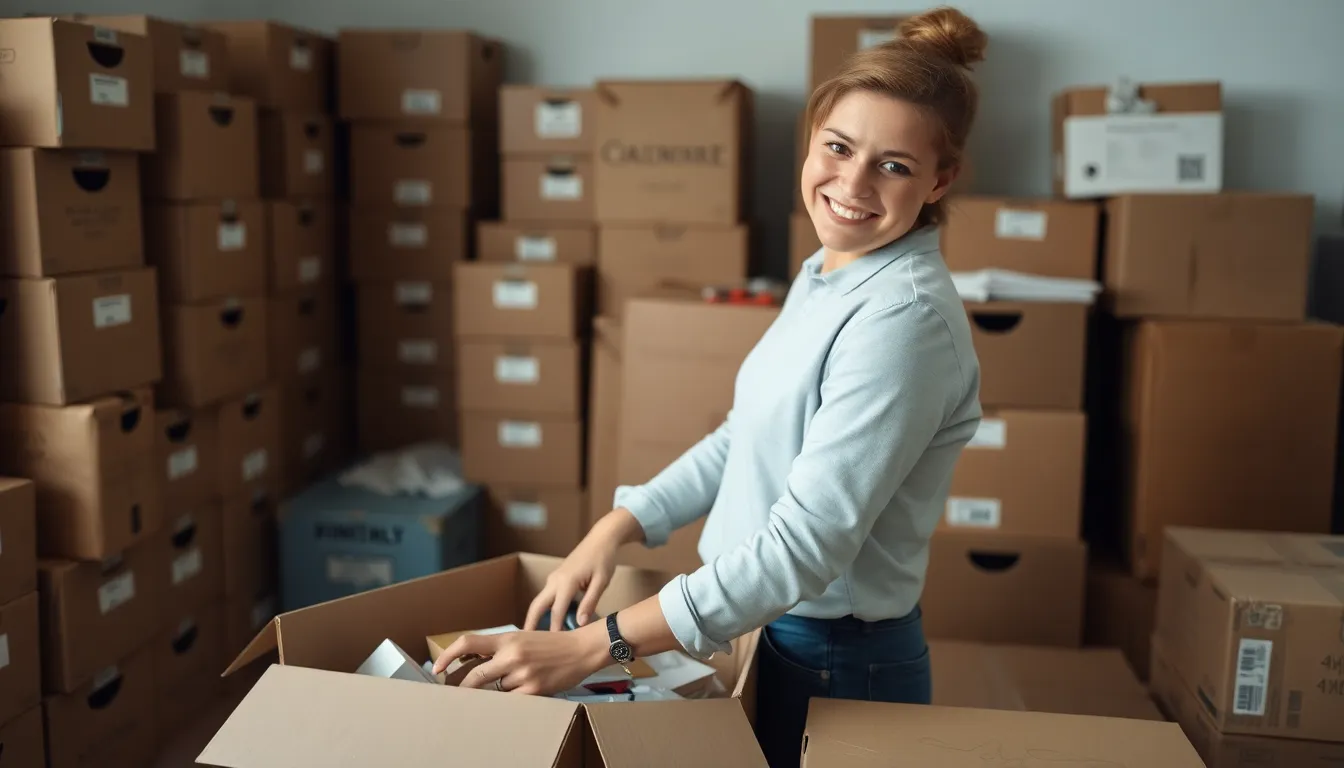Packing and unpacking can feel like a game of Tetris gone wrong. One minute you’re organizing your belongings with military precision, and the next, you’re wrestling with a suitcase that seems to have a mind of its own. Whether it’s a weekend getaway or a big move, the chaos of packing can turn even the most organized person into a frantic mess.
But fear not! With the right strategies, packing doesn’t have to be a battle. Unpacking can be just as wild, as you sift through a mountain of boxes to find that one elusive sock. This article dives into the art of packing and unpacking, offering tips that’ll make you feel like a pro. Get ready to transform your packing woes into a smooth and surprisingly enjoyable experience. Who knew packing could be so fun?
Table of Contents
ToggleOverview of Packing and Unpacking
Packing and unpacking serve as essential components of travel and relocation. They demand organization and efficient strategies to alleviate stress. Each process invokes a unique set of challenges that requires careful planning. During packing, individuals often confront decisions regarding what items to take and what to leave behind.
Unpacking, in contrast, often involves sorting through boxes and determining where items belong within a new space. Many find the prospect of sorting can feel overwhelming. Embracing a systematic approach can simplify both processes. For example, labeling boxes during packing facilitates quick access to essentials upon arrival.
Creating packing lists aids in reducing the possibility of forgetting important items. Gathering supplies such as boxes, tape, and markers ahead of time lowers frustration levels. Packing room by room establishes an ordered flow, making the task less daunting.
Unpacking also benefits from prioritization. Unpacking essentials first, such as kitchenware or toiletries, streamlines the transition. Establishing functional areas within the new space promotes an efficient unpacking experience.
Individuals can transform these daunting tasks into manageable, even enjoyable activities through thoughtful strategies. Utilizing these techniques helps build a sense of control, making packing and unpacking feel less like a chaotic Tetris game. By following structured approaches, packing and unpacking can turn from overwhelming tasks into organized experiences.
Importance of Efficient Packing

Efficient packing significantly impacts overall moving experiences. Prioritizing organization can streamline both packing and unpacking, making the processes smoother.
Benefits of Good Packing
Good packing minimizes damage to items, reducing potential losses. It maximizes available space, allowing for a more streamlined transport process. Incorporating labeled boxes simplifies the unpacking process, enabling quick identification of essential items. Significant time savings occur when everything is efficiently organized. Additionally, thoughtful packing can enhance safety, preventing items from shifting during transit. Balanced packing even promotes a positive mindset, instilling confidence about the upcoming move.
Common Mistakes to Avoid
Underpacking often leads to chaos, resulting in forgotten items. Overpacking creates unnecessary weight, making lifting and transport difficult. Failing to label boxes complicates the unpacking, prolonging the search for specific items. Using inadequate packing materials can leave fragile items vulnerable, increasing the likelihood of breakage. Rushing through the packing process leads to disorganization, resulting in lost time and increased stress. Prioritizing planning prevents these pitfalls and promotes a smoother moving experience.
Techniques for Effective Packing
Effective packing relies on choosing appropriate materials and employing tailored strategies for different items. Utilizing the right resources ensures safety and efficiency during transport.
Choosing the Right Materials
Selecting suitable packing materials is crucial. Sturdy boxes and bubble wrap provide essential protection for fragile items. Use packing tape that’s strong, ensuring boxes remain sealed throughout transit. Choose packing paper or foam inserts for cushioning delicate belongings. Labeling materials like markers and colored tape enhances organization during the unpacking phase. Consider repurposing items from home as packing materials, such as blankets or towels, to save time and resources. Using eco-friendly supplies also aligns with sustainable practices, benefiting the environment while packing efficiently.
Packing Strategies for Different Items
Tailoring packing strategies to specific items significantly improves efficiency. For clothing, rolling garments instead of folding them maximizes space and minimizes wrinkling. Grouping similar items, like books together, keeps organization intact within boxes. Fragile items require extra attention; wrapping each piece in protective material safeguards them against impact. When handling electronics, ensure original boxes are used whenever possible, enhancing security. Implement room-by-room packing, focusing on one space at a time, to avoid chaos. Lastly, prioritize essential items by placing them in designated boxes to access them easily upon arrival.
Unpacking Strategies
Unpacking effectively can make transitioning to a new space simple. Implementing strategic practices eases the overall process.
Best Practices for Unpacking
Start with unpacking essentials first. Focus on items necessary for daily living, such as toiletries, clothing, and kitchen essentials, to avoid chaos. Designate a specific area for each item’s category during the unpacking phase. Tackle one room at a time; concentrating on the bedroom, bathroom, or kitchen prevents distractions. Maintain a calm mindset by setting a reasonable timeline for completing the unpacking. Include friends or family members for help; companionship can make the process feel less daunting while increasing efficiency.
Organizing as You Unpack
Organizing while unpacking enhances the functionality of the new space. Labeling boxes clearly simplifies identifying items without opening every box. Create zones for specific activities, like workspaces, leisure areas, and dining setups, to establish flow. Group similar items together as they come out; this practice streamlines the organization and promotes a structured approach. Utilize available storage solutions, such as shelves and drawers, to keep everything arranged. Disposing of unwanted items during the unpacking process clears space and reduces clutter. Prioritize arranging the kitchen and bedrooms first; these areas impact daily life most significantly.
Packing and unpacking don’t have to be overwhelming experiences. By applying effective strategies and maintaining organization throughout the process, individuals can turn chaos into a manageable task. Prioritizing essential items and utilizing proper materials can significantly enhance efficiency and reduce stress.
With a little planning and the right mindset, packing can become a more enjoyable part of any move. Embracing these techniques not only simplifies the transition but also sets the stage for a smoother adaptation to a new space. Ultimately, transforming these tasks into organized activities can lead to a more positive moving experience.




